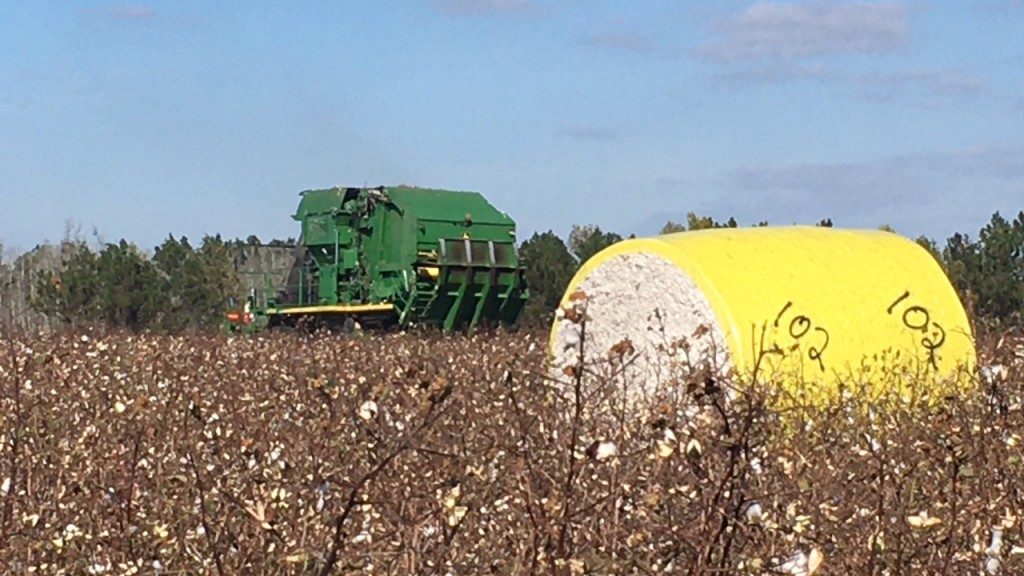Dr. Scott Monfort, UGA Peanut agronomist, has a few comments about peanut fertility. Topics include calcium management, pegging zone samples, boron and manganese.
Ensuring best soil fertility is essential for a successful peanut crop. Here are some key points to consider:
1. Soil Testing/Pegging Zone Sampling: Conduct a soil test to determine pH levels and nutrient content. The ideal pH for peanuts is between 6.0 and 6.5. Soil tests will also reveal levels of phosphorus (P), potassium (K), calcium (Ca), and other critical nutrients.
2. Lime Application: If soil pH is below 6.0, apply lime to raise it to the optimal range. Lime should be applied well before planting to allow time for it to react with the soil.
3. Calcium Management: Calcium is crucial for peanut development, particularly in the pegging zone (top 3 inches of soil). Gypsum is commonly used to supply calcium and should be applied around early bloom. Ensure a calcium to potassium ratio of at least 3:1 to avoid deficiencies.
4. Boron and Manganese: Apply boron at 0.5 lb/acre, typically through foliar feeding during the first two fungicide sprays. Address manganese deficiencies through tissue sampling and foliar feeding if needed.
5. Inoculation: Use Rhizobium inoculants if peanuts have not been grown in the field for more than four years. This helps in nitrogen fixation, which is vital for peanut growth.
Gypsum Sources for Peanut Farming in Georgia
Gypsum, or calcium sulfate, is a crucial amendment for peanut farming in Georgia, particularly for ensuring adequate calcium levels in the pegging zone. Here are some key sources and considerations for gypsum application:
1. Naturally Mined Gypsum (USG 500): A reliable source, especially available in East Georgia.
2. Phosphogypsum: A byproduct of phosphate fertilizer production, sourced from Florida. Availability may vary.
3. Flue Stack Gypsum (FGD Gypsum): A byproduct of reducing sulfur dioxide emissions from coal-fired power plants. Availability has decreased with the reduction in coal-fired plants.
4. Recycled Wallboard: A cost-effective alternative, though it requires proper processing to ensure safety and effectiveness.
5. Lime: Can be used instead of gypsum but must be applied before planting since its calcium is less soluble. Lime is beneficial for adjusting soil pH and providing calcium.
Alternative Calcium Sources
1. Liquid Lime (Topflow): Surface-applied at planting at 10-15 gal/A. Provides less calcium than gypsum but can be useful if gypsum is unavailable. 10 Gals/A = 25 pounds of Ca/A
2. Calcium Chloride and Calcium Thiosulfate: Applied through irrigation systems during peak pod fill (around 60 days after planting) at 20-30 gal/A. These offer a soluble form of calcium for emergency or insurance applications.
1. Calcium chloride solutions typically contain 10% calcium by weight. Given that the density of calcium chloride is around 11 lbs/gallon, each gallon contains approximately 1.1 lbs of calcium. Therefore, when applied at a rate of 20 gallons per acre, it delivers about 22 lbs of calcium per acre.
2. Calcium thiosulfate solutions contain 6% calcium by weight. With a density of 10.4 lbs/gallon, each gallon contains approximately 0.63 lbs of calcium. Thus, when applied at a rate of 30 gallons per acre, it provides about 18.9 lbs of calcium per acre.
Application Timing and Considerations
• Early Bloom Application: Apply gypsum at early bloom (30-45 days after planting) to ensure calcium availability during pod development.
• Peak Pod Fill: If gypsum application is delayed, apply calcium chloride or calcium thiosulfate through the pivot at peak pod fill (~60 days after planting).
• Water and Irrigation: Adequate water is essential for dissolving gypsum and allowing calcium to penetrate the soil and reach developing kernels.
Polysulfate
Polysulfate is a multi-nutrient fertilizer providing calcium, sulfur, magnesium, and potassium. For peanut production, calcium is particularly important for pod development. Polysulfate is coarse and may take longer to break down than gypsum. Apply pre-plant, similar to lime.
Here are some general guidelines for using polysulfate:
• Application Rate: Polysulfate is typically applied at a rate of 200 to 400 lbs per acre.
• Calcium Content: Polysulfate has about 14% calcium. At the recommended application rate, this would supply approximately 28 to 56 lbs of calcium per acre.
Reducing the rate of gypsum to 750 lbs/A is likely a better option than most alternatives.
If you have questions please contact your local county agent.
